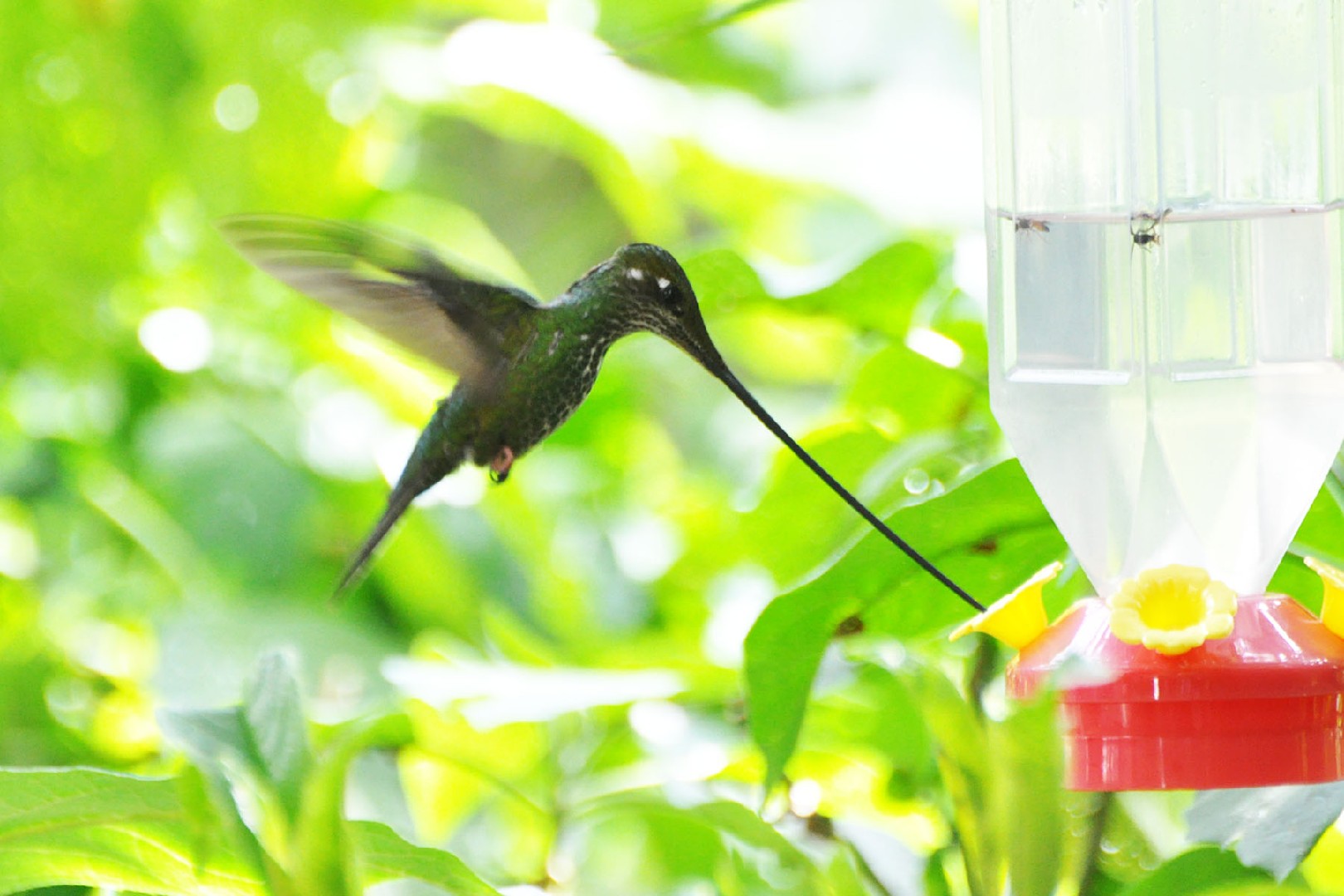Sword-billed Hummingbird
A species of Sword-billed Hummingbird Scientific name : Ensifera ensifera Genus : Sword-billed Hummingbird
Sword-billed Hummingbird, A species of Sword-billed Hummingbird
Botanical name: Ensifera ensifera
Genus: Sword-billed Hummingbird
Content
Description General Info
 Photo By Don Faulkner , used under CC-BY-SA-2.0 /Cropped and compressed from original
Photo By Don Faulkner , used under CC-BY-SA-2.0 /Cropped and compressed from original Description
Sword-billed hummingbirds perch on the mid- to upper-level branches of neotropical trees. Lengths are 13–14 centimetres (5.1–5.5 in) from the tail tip to the base of the bill, with males slightly larger on average than females. The bill can additionally be over 10 centimetres (3.9 in) long. Individuals weigh between 10–15 grams (0.35–0.53 oz), making it one of the largest species of hummingbirds. As is characteristic of hummingbirds, E. ensifera can fly backwards and hover in the air. It also exhibits higher than average wing-disc loading than other members of its family. E. ensifera displays sexual dimorphism where plumage varies between males and females. Males have a coppery bronze head, bronze green back, bright green underbelly, blackish green throat, and bronze green tail. Females have a similarly colored head and back, a white belly speckled with green, a more olive colored throat, and grayish white edging around the tail. 
Size
23 cm
Nest Placement
Ground
Feeding Habits
Sword-billed Hummingbird thrives on nectar, particularly from long-corolla flowers like Passiflora and Datura. Its extreme beak length suits its specialized feeding, facilitating in-flight drinking and trap-line foraging, which enhances pollination.
Habitat
Sword-billed Hummingbird thrives in neotropical montane cloud forests of the Andean highlands, particularly favoring humid to semi-humid upper montane forests, páramo shrubs, and elfin woodlands. Adapted to a life at elevations of 1,700 to 3,500 meters, these birds seek out areas abundant in nectar-rich flowers, including gardens and hedgerows, across a variably distributed and elusive range.
Dite type
Nectivorous
General Info
Feeding Habits
Bird food type
Distribution Area
Ensifera ensifera is a neotropical hummingbird found throughout tropical montane cloud forests of Bolivia, Colombia, Ecuador, Peru and Venezuela. It is found at higher elevations of 1,700–3,300 metres (5,600–10,800 ft), but the most common occurrences are between 2,400–3,100 metres (7,900–10,200 ft). This is a preferred habitat due to the concentration of nectar producing flowers. It is a year-round resident of all three Andes ranges, with no known migration patterns. While the species is considered to have stable numbers and a wide geographic range (over 60,000 square km), it is unevenly distributed and hard to find, making the species difficult to research. 
Species Status
The sword-billed hummingbird is considered of "Least Concern" by the IUCN. There is no sign of population decline or visible threats to the species. There is also no census on global number of individuals, because of the large range of occurrence and uncommon sightings. Climate change and deforestation are the two most probable threats to E. ensifera in the future since this can lead to habitat loss and decreased food sources, especially of Passiflora mixta. 
Scientific Classification
Phylum
Chordates Class
Birds Order
Swifts and hummingbirds Family
Hummingbirds Genus
Sword-billed Hummingbird Species
Sword-billed Hummingbird